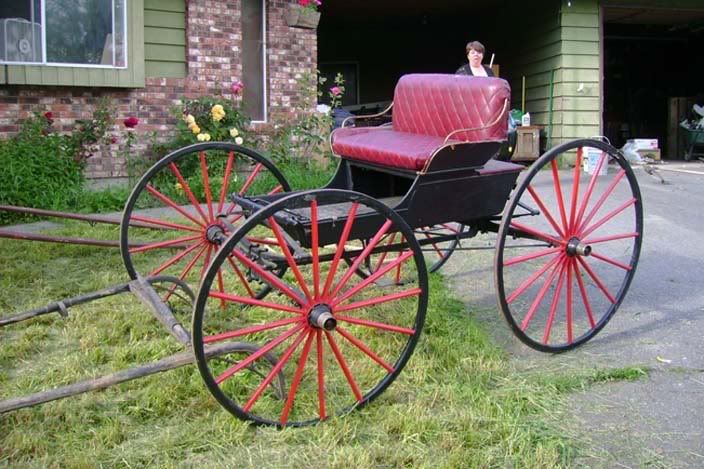Yes, you can still get them. Call Witmer Coach Shop (New Holland, PA) at 717 656-3411 (M-F 7AM-5PM, Sat 7AM-11AM) to order a roll (the washers come as one long coiled roll of leather – you cut off pieces to fit around your axle head.) Since they are Mennonites, the transaction will be the old fashioned way (check) but they are super nice and very prompt.
To change the leather washers remove the wheel nut off the first wheel of the carriage, jack up the carriage using a carriage jack (or lift the side of the carriage so that you can place the axle on a sturdy stand that will lift the wheel at least 1" off the ground) gently take off the wheel (it should slide right off), remove the old leather washer (note it may have one or two - if it has two you will see a washer in the front and one in the back of the axle head). Make sure you note where they are placed on the axle spindle because this is where the new one(s) will go. Clean off the axle spindle with a soft dry rag.
Cut off a piece of the new leather coil so that the piece fits neatly around the end of the axle (you can use the old washer(s) as a guide to how much to cut off the roll). Check to make sure the leather ends will just touch each other when placed around the axle end. Remove the new washer(s) and smear a good coating of axle grease on the leather using standard car axle grease. Put the new washer(s) back on the axle and now coat the axle spindle liberally with axle grease. Run a bit of new grease inside the wheel hub collar, replace the wheel onto the axle sliding it on carefully so that you don’t move the new washer out of place, and replace the nut, hand tightening it, but not fiercely. Do this for the remaining three wheels, and you’re set.
Your wheels should no longer wobble. It they do, the metal collar in the wheel is probably worn and needs to be replaced, or the axle is shot.
You should see some excess grease oozing out of the inside wheel hub as the carriage is used - just wipe it off with the soft rag. Don’t go too long before you check and repack the axles again – about every 100 miles or so of use should be fine.
That is an adorable little 1/4 turn runabout. It appears to be missing it’s dashboard, but am I right that I did see it still had the wheel-catch rollers (on the side of the carriage where the front wheels would hit if the vehicle was turned tight). If not, you certainly want to get a set for either side - very important safety issue with anything not cut under. If you look into getting a drop pole for this antique, I’m sure your pair of 12.2h ponies could pull it without issue. These types of vehicles were very lightweight, designed for traveling the straight city and suburban era roads of the late 19th century. Not designed for whipping around tight turns, however! 
Have fun! 



